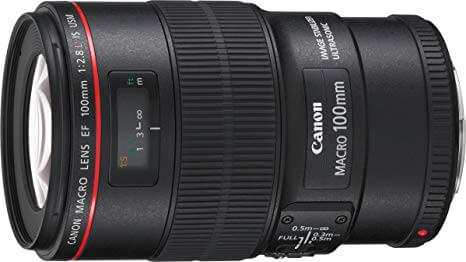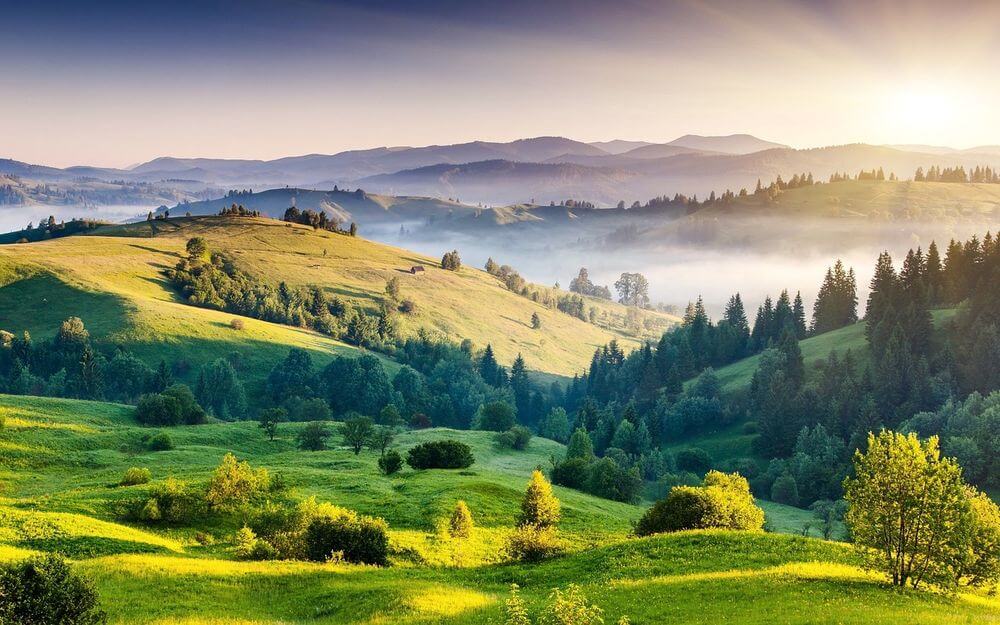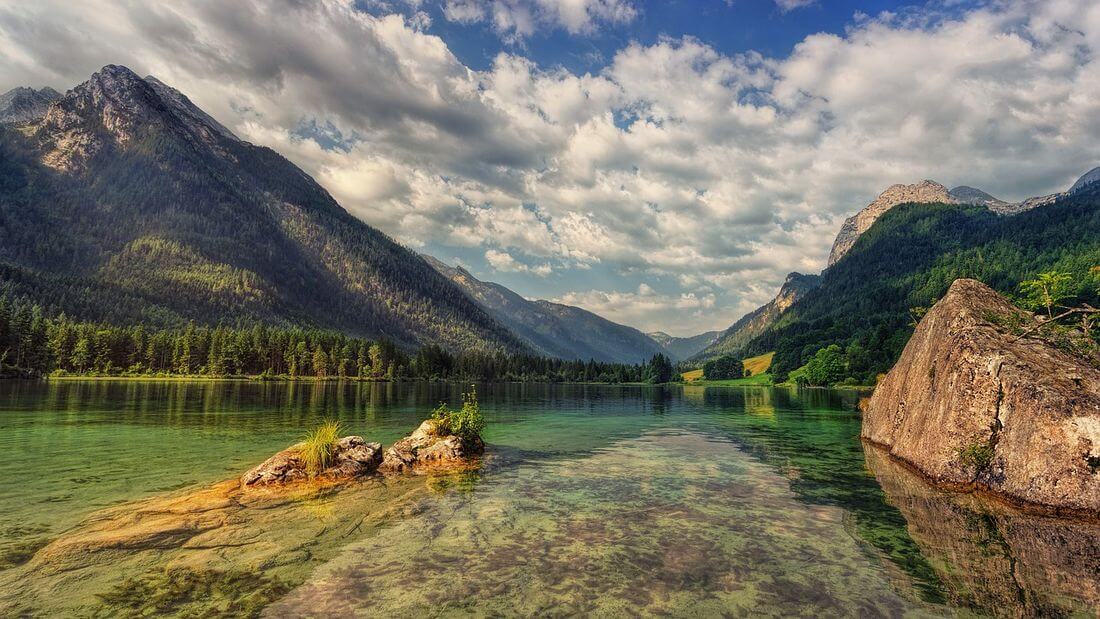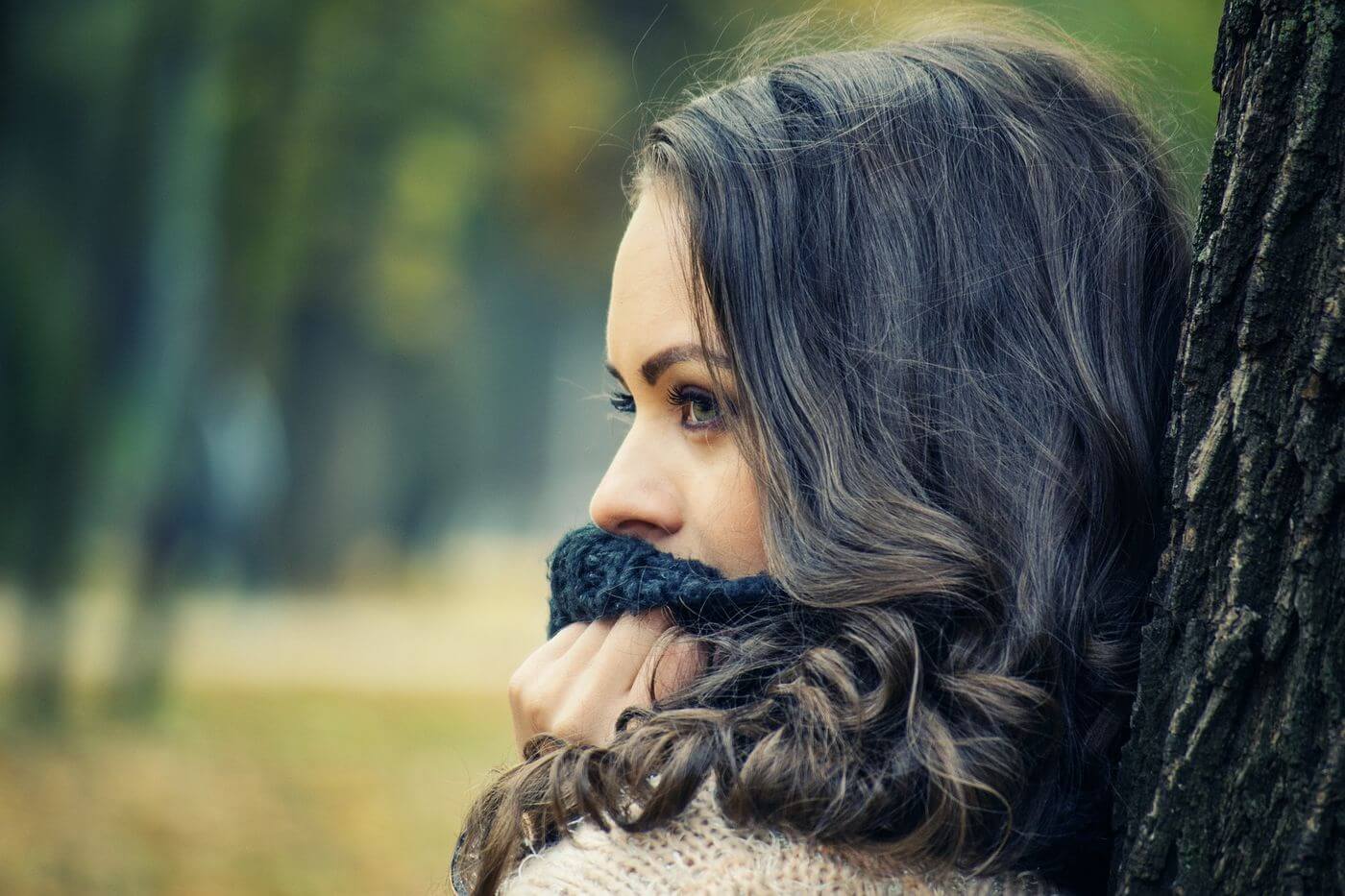How To Select Camera Lens
Which camera lens to choose and how?
If you have found yourself here, it is possible that you lot are new to photography, that you lot have received your commencement DSLR for your birthday and that you would like to learn photography? I take already discussed, in an article some fourth dimension ago, which lenses to cull when traveling? Today, this article focuses on the choice of lenses for DSLR cameras only. So how practise you choose a camera lens in general?
This is a hard question to answer in just a few lines and, if you want to make a thorough choice, there are many parameters to learn about and take into account when choosing your camera lens. All of them, whether Canon and Nikon, or other third-party brands, have their ain characteristics and it will exist necessary to know them to make the right choice/best pick.

If yous are a beginner, you may become lost in the vast choice of lenses, of all ranges and unlike options. In short, making a decision is not easy but I will try to make it easier for you, even if you only accept one lens in mind to start off with! Whether you own a Nikon DSLR, a Catechism DSLR or a Sony DSLR, choosing your lens is never easy. You will apace exist overwhelmed past barbaric terms: focal length, distortion, chromatic abnormality, minimum focus, wide angle, crop gene, shallow depth of field, white balance, etc. Do yous see what I mean?
This article will mainly focus on digital SLR camera (DSLRs) and not mirrorless photographic camera.
- Technical terms for choosing a camera lens
- The focal length
- The maximum discontinuity
- Stabilization
- Make specific terms
- Which camera sensor are you using?
- For which blazon of photo?
- Which brands to cull then?
- A camera lens according to your needs
- Which lens for landscape photography?
- A camera lens for portraits?
- Which lens for sports or wildlife?
- A lens for depression light?
- Choosing your camera lens co-ordinate to your budget?
- Conclusion and summary
Equally Amazon Assembly, we earn from qualifying purchases. It means that, all the links linking to camera gear in this post are redirecting to Amazon stores.
Technical terms to know when choosing a camera lens
As with choosing a digital camera, earlier starting information technology is necessary to understand some technical terms, at least to approach them in lodge to understand them. It volition be difficult to choose a camera lens without understanding the elements to consider when making your purchase. But you don't have to be a professional lensman to know which i to cull. I will guide you in your purchase.
I'll try to go along it simple. Overall, I would say that at that place are iv main elements to understand in guild to know how to choose a photographic camera lens.
Salvage this postal service on Pinterest and come up dorsum to information technology subsequently!
The focal length or which focal length to choose for my lens?
This is the first term to understand when y'all want to choose your camera lens. The focal length corresponds, simply, to the zoom level of the lens (in millimeters). In that location are fixed focal length lenses – too called "prime lens" (Ex: 14mm, 24mm, 35mm, 35mm, 50mm, 70mm, 100mm, 150mm, 600mm, etc.) and variable focal length lenses (ex: x-20mm, 24-70mm, 70-200mm, 100-400mm, etc.). In the photo at the showtime of the commodity, the focal length is 70-300mm. These lenses are oft considered to be more versatile.
Merely put, the smaller your focal length (short focal length, close to "zero" mm), the wider your field of vision volition be when y'all accept your photo. Basically, if yous stand in the aforementioned position to have a photo, yous will see that at 10 mm yous accept a very broad field of vision, information technology will shut when at 55 mm, and even more at 200 mm, etc.
Please annotation that the given focal length is always in comparing with a full-format sensor. An 18mm is therefore an 18mm on a Full Frame sensor camera. On an APS-C sensor, it is the equivalent of a 29mm. There is indeed a conversion factor between the two, we will come back to that one day.
The diagram below summarizes this well, with the angles of vision at different focal lengths.

In terms of focal length, there are generally 3 categories:
- The wide angle / Ultra wide angle / Wide angle lens: Nosotros are generally situated below a focal length of 28 mm (Ex: 17-40 mm / 16-35 mm / xiv mm, etc.), depending of course on whether you have a full frame DSLR or an APS-C. In short, you see wider than what you lot would run into with the human being middle in the field. The field of view volition be very broad and the perspectives volition be greater. This type of focal length is mainly used for landscape, architectural and street photography. On a wide angle zoom, the vision often appears a little "elongated" in the viewfinder. Care should be taken to avert vignetting and deformation with this blazon of focal length. There are also so-called fisheye lenses that propose distorted visions of reality!

- Standard lenses: This is what you are "given" when y'all purchase a camera, for example the most classic is 18-55 mm. This is more or less similar to what you see with your center (between 35 and 50 mm depending on the type of DSLR). This type of focal length is used to take "everyday photos" such as basic portraits, street scenes, even landscapes, etc. This is often the first lens provided to start learning photography. Let's just say that this will be enough at the starting time to get you started in digital photography. No demand to spend thousands on a very expensive lens when you first start.
- Telephoto lenses: All lenses above well-nigh 100 mm are considered to be in this category (due east. yard. 100 mm, seventy-200 mm, 400 mm, etc.). This blazon of focal length is generally used to zoom in on a subject area for which you want more detail, a magnification of the scene, or a larger image. The most classic example is wildlife photography. Notation that a teleconverter allows you to become even further. Depending on where you are, this is the blazon of photographic accessory that never leaves your photograph bag.
Fifty-fifty with a telephoto lens, you lot can have very beautiful photographs of wildlife or scenery!
These "millimeter numbers" should be adapted if you use an APS-C or Full Frame photographic camera. I will explain in a futurity commodity the differences, advantages and disadvantages of each one!
This is a perpetual and recurrent debate among photographers. Everyone has their ain opinion on the arguments for and against these types of lenses. Here are the main advantages of the two categories according to my information:
- Advantages of zooms lenses
- Y'all don't demand to movement to exist able to photo your subject,
- Depending on the zoom focal length range, you can take many types of photos with a zoom (landscape, portrait, wildlife, etc.),
- You have a practiced to very good quality over the entire focal length range
- They have better versatility/magnitude for everyday use,
- Advantages of fixed focal lengths:
- The quality of fixed focal lengths in terms of precision and sharpness remains overall superior to zooms,
- They are quite oft much lighter than a zoom,
- They are also often cheaper (simpler construction) -> see the first-class Canon 50mm f/1.8 photographic camera lens,
- For the same focal length as a zoom, the maximum aperture of a fixed focal length volition be larger,
- Equally a general dominion, the size is relatively smaller than a zoom,
- They require you to move around and think about your positioning when taking the photograph (very interesting for improving its framing and composition).
The focal length used is therefore the offset element to sympathize when choosing your photographic camera lens. It will greatly influence the type of photo you lot will be able to have in the next step (I talk virtually that below).
One time the concept of focal length in a photo is understood, many questions will ascend: which zoom to cull? Which telephoto zoom lens to cull? Which wide bending to cull etc. I will reply those questions later in separate articles.
The maximum discontinuity of a photographic camera lens
Once the focal length concept is understood, the second chemical element to consider is the maximum aperture of the lens. To put it simply, it is the lens' ability to recover light (past opening its diaphragm). This is the number behind the "f/". The smaller the number (e. g. f/1.4) the larger your aperture is. In concrete terms, you bring in more than light and this allows three things:
- To take photos of your subjects faster (faster shutter speed),
- To exist able to take photos in low-light conditions without having to increment ISOs or risk blurring the prototype,
- To blur your backgrounds (and thus highlight your subjects). This is what is referred to as 'bokeh'. This allows you lot to manage your depth of field, the focus expanse of the photograph.
Lenses with wide apertures are called "brilliant" or "fast".


As a rule, it is important to know that the larger the discontinuity of a lens, the more expensive and heavier the lens will be, simply also the meliorate the quality.
The lens aperture can exist fixed (e. one thousand. f/i.four) or sliding (f/4 to f/5.6)
- On a fixed focal length (e. g. 50 mm f/1.four), the maximum lens apertures are ever fixed,
- On a zoom, two cases arise:
- A stock-still maximum aperture: this only means that you lot will accept the same maximum aperture no matter what focal length you have (Ex: lxx-200mm f/2.viii). Note that fixed discontinuity zooms are by and large of better quality, more expensive, and let for greater creativity!
- A variable aperture: this is the instance, for example, with my Canon 70-300 mm f/four-five.six. For instance, I volition have a maximum aperture of f/4 at lxx mm and f/5.6 at 300 mm.
So, if you want to know how to choose a photographic camera lens, the maximum aperture of a lens is the second element to understand.
Prototype stabilization of a lens
This is another factor to acquire about and understand when deciding on your camera lens. Some lenses have an integrated prototype stabilizer.
To put it just, it limits the risk of motility blur in ii conditions:
- Shooting in low light atmospheric condition (night photography for example),
- When using a long focal length (telephoto lens) – you may sometimes lack speed due to the focal length.
Note that y'all can always use a tripod to shoot your photos in depression-light conditions and increase your chances of a sharp photo.
That is, a stabilized lens will price more than than a not-stabilized lens. However, the latter more often than not allows you lot to proceeds at to the lowest degree 2 to 3 speed steps (so you can have a slower speed photo without the risk of a blurry epitome).

Technical terms specific to each brand
Each brand offers its own technical terms on several elements of the lens:
- Its stabilization or not: Canon (IS), Nikon (VR), Tamron (VC), Sigma (OS),
- Its compatibility with Full Frame cameras: EF at Canon and FX at Nikon for example (Nikon DX for APS-C),
- Its range: Pro or non: Example 50 at Canon, One thousand at Sony
- Its type of autofocus motor: at Canon (USM / STM), at Nikon (AF-S), at Sigma (HSM).
In this case, it is a macro lens of the EF-Southward type (for APS-C cameras) with a stock-still focal length of 60mm and a stock-still discontinuity of f/2.8. Are you lot interested in macro lenses?
It will therefore exist necessary to bank check carefully before buying a lens to find out what these acronyms represent to.
I think I have reviewed all the main technical photo elements that you demand to take into account and know in order to empathize how to choose a camera lens?

2 - Which camera do you use?
Another point to consider chop-chop. Depending on the blazon of photographic camera you are going to buy or already have, some lenses will not be uniform with your camera.
Generally, if you are a beginner, you will often purchase an APS-C type DSLR (cheaper to beginning with). So make sure that the lens you are going to purchase will be compatible with a possible transition to a Total Frame camera 1 day.
For example, at Canon, the acronym EF-South is reserved in APS-C format. At Nikon, the DX format is a reminder of Total-Frame compatibility.
3 - The type of photos you want to take?
This is ordinarily, as well as the budget, the master concern when choosing a camera lens. Indeed, after having understood all the technical photographic terms, mentioned in the outset (long) paragraph, you lot must ask yourself the question, what do I want to take a photograph of?
This volition be the master element that will determine the choice of your lens.

- Would y'all like to take portrait photos?
- Practise you want to specialize in landscape photography?
- Would you rather focus on macro photography? Wildlife photography? Close-ups? Sporting images?
- Do y'all want to know how to photograph a waterfall in long exposure?
- Only have beautiful photos? Gift photos?
You lot can further reduce your search by request yourself in which general conditions y'all will utilise your lens (nighttime time, in the undergrowth, in daylight).
This is the fundamental point and where you need to ask yourself the most questions. Knowing what you lot want to photograph will help you focus on the right lens.
four - Which brand of lens to purchase so?
This is a less important indicate, but information technology deserves a few sentences for clarity.
Exist aware that there are very good lenses available from tertiary-party brands (Sigma, Tamron, Zeiss, etc.) and bad lenses from more well-known brands (Canon, Nikon, Sony, Pentax, etc.). Out of habit, I have always preferred to stick to the same brand equally my camera (Canon). If I couldn't find the correct one, or the price was merely too high, I turned to a third-party brand. Lenses supplied past well-known brands (Canon or Nikon for example) will ever exist more expensive than lenses sold by third-political party brands. So, think most how y'all want (or tin) equip yourself.


Interested in mural photography?
Most of the fourth dimension, third-party brands provide mounts for the bigger brands. So be careful if you purchase a lens from a make other than your camera, cheque that the mountain is well adapted for your photographic camera!
Final but non least, it is up to yous to see, from the online tests, whether the departure betwixt the proposed price of the named brand and the third-party brand is justified or not. Information technology's sometimes difficult to be sure!
5 - Choose your camera lens according to several criteria
The purpose of this commodity was not really to give y'all a listing of useful photo lenses to use in such and such situations, but I will try in this final paragraph to present you with the choice of lenses available according to two master criteria: needs and budget. I am simply talking about DSLR lenses here. Hybrid photographic camera optical lenses should really be dissociated from these lenses and will be the subject of their own article at a later date.
The pick of your camera lens co-ordinate to your needs
When you start in photography, you don't at first know what type of photographs you're going to want to take. It may take yous a while to find your marks. All the same, some of you lot may already accept specific ideas about the settings or situations that may be of interest to you lot. You may be interested in night photography, low-lite photography, landscapes, portraits, etc.
That's why, it seemed relevant to me, at the terminate of this article, to guide you on your selection of camera lenses. The choice of lens is just as important as the choice of cameras and both are as important to consider.


A photographic camera lens for landscape photography
Let'due south face it, information technology is quite possible to take mural photos with an entry-level lens equally plant in all the kits, the classic 18-55mm. The focal range given allows you to zoom in on the bending of coverage (at 18mm) and this will allow you lot to zoom every bit necessary. The quality/price ratio remains right but the optical quality of its kit lens remains overall very average.
For landscape photography, information technology is ofttimes advisable to use a wide angle (GA) or Ultra-Wide Bending (UGA) lens, the purpose being to open up its angle of view and give an effect of immensity to the scene in forepart of you lot. Except in special cases (sunrise and sunset or night photography), the amount of calorie-free will be sufficient to take instant photos past handheld camera, without the use of a tripod. The necessity of bright optics for a wide-angle lens, if used only nether simple weather condition, information technology is therefore questionable. Hither are three examples of ideal lenses for landscape photography!



From my point of view, if yous accept the budget, I would advise you to invest in a wide-angle lens for this type of photo. The photographic camera sensor size should be taken into account when choosing the lens, although information technology should be noted that some lenses are only compatible with certain cameras. Here are some very practiced references within this area.
What lens for portrait photography?
I'm not what you might telephone call a portrait specialist, but I practice practice a minimum to give you lot some advice. Generally speaking, lenses betwixt the "minor telephoto lens" and the telephoto lens should be chosen, i.eastward. between 50mm and 200mm. The range of lenses hither is quite wide. It will all depend in one case over again on the size of the sensor of your DSLR. In APS-C, eyes between 50mm (broad portrait) and 100mm (tight portrait) are preferred. On a Total Frame sensor (24×36), an 85mm or even a 100mm is often used. Anybody will cull a fixed focal length or a zoom, often considered more versatile depending on the state of affairs. One can conspicuously observe a good lens dedicated to portraiture without too much expense, very oft with a big aperture. To proper noun only 2 very well-known models:
- The Canon 50mm f/1.4 USM: perfect in APS-C for a large portrait and a very wide aperture, at an unbeatable price,
- The first-class Sigma 85mm F1.iv DG HSM Art: a very dainty lens with xiv lens elements in 12 groups for a first-class bokeh.
In fact, I have written a full guide for choosing your lenses for portrait photography.

I propose y'all take a closer look at the four known references at Catechism, Nikon and Sigma. These four lenses are renowned for their quality, brightness and blurred background quality. The Sigma f/1.4 remains a superb lens capable of delivering impressive bokeh!
Photographic camera lens for wild fauna and sports
I have deliberately grouped these 2 styles of photography together, although they are very different. The two domains have something very important in common: the focal length. Indeed, in these situations, you are nigh likely far away from your bailiwick (wildlife, player running by, bird in the sky, motorcar in the altitude, etc.) and you volition need a long focal length to be able to zoom. In order to isolate your subject, you will often employ a large aperture of the diaphragm (the number f/). A stabilized lens can assistance with a long focal length. Finding appropriate lenses will non necessarily be elementary because the possibilities are and then great. In that location are telephoto lenses at all prices (or almost) and depending on the maximum discontinuity and focal range desired, prices rise very speedily.
Below is a choice of 6 lenses from Catechism, Nikon, Sigma and Tamron. I have summarized the master characteristics to guide you in your choice. Some are made for beginners in photography (with sliding discontinuity) and others will be included in the higher range! See some additional explanations below the table besides!
In general, entry-level telephoto lenses have relatively small, often sliding apertures, such as lxx-300 f/4-five.6, or 55-250 f/4-five.6. I myself started with the latter at Canon, and I must admit that to begin with, that's more enough to give you lot time to get used to it. You volition already be able to zoom beautifully with this type of focal length and your vision of photography will alter! When y'all feel the demand to move upwards the range (you will need to sympathise why a maximum aperture of f/5.6 to 200mm is not enough in many cases), information technology will then be time to switch to higher ranges, either for classic well-known brands (Canon, Nikon), or even for third-party brands (Sigma, Tamron), which seem to be more and more equal in quality to classic brands, while remaining less expensive… In other words, in almost all cases, these lenses volition often take a constant aperture of f/2.eight or f/4, whether stabilized or not. In the stop, information technology will be a question of budget y'all have for your purchase.
Choose your photo lens for low light conditions
When I talk about low brightness, I mean all situations where y'all will lack light and clearly, choosing the right photo lenses will be really of import. The DSLR camera will also be decisive because it will ensure the rise in ISO and the direction of dissonance on the images. Concerning the lenses, everything volition depend on the type of photo you want to take.
For those who are passionate about landscapes at dusk and sunrise, for example, y'all tin refer to the few references mentioned to a higher place. The merely difference volition be that when yous are in difficult conditions, you volition accept two options to avoid blurring from camera shake: use a brilliant photo lens (the smallest "f/" possible) or take your photos using a tripod.
For those who are interested in nighttime photography or street photography and desire to isolate the subjects and play with the blurred ones, I would often advise that y'all use either:
- A classic transtandard bright lens, such as the beautiful Canon 17-55 mm f/2.eight IS USM or Sigma 17-50mm f/2.viii DC OS HSM EX,
- Bright optics, either conventional telephoto lenses (Canon 70-200 L IS USM f/two.8) or fixed focal lengths such as Tamron SP 45mm F/1.8 Di VC USD or the classic Nikon AF-S 50mm f/i.8G.
In whatever instance, keep in mind that with the exception of using a tripod, owning a brilliant lens will always exist very interesting as presently every bit the light drops and you can open your diaphragm, and so you don't have to become upwardly too high in ISO and degrade your images.


Camera lens, choose it according to your budget?
This is the last bespeak of the article and probably the well-nigh important for many people. How to choose a camera lens? Many will say that it depends on the price too!
Overall, everyone agrees that in photography, yous generally become what you pay for. I'yard not saying that there are no cheap photograph lenses that are of high quality, but overall, the more you pay for a lens, the improve it will be. Only y'all tin can decide whether it is acceptable to pay this or that sum for a camera lens.
Go on in heed that there are, for case, very expert camera lenses at a lower price. To name only two for portrait photography, by Canon:
- The 50 mm f/1.8 II, perfect for portraits on an APS-C camera. I take owned one for a few years at present, and information technology is perfect for taking pictures of my little one with a cute blurred groundwork. Compact and lightweight, I love it for its firmness!
- The 85 mm f/1.8, which has extraordinary characteristics in terms of stitching. It is perfect for all owners of a Full Frame camera who want to offset taking portraits without too much expense.
For Canonists, I advise you lot take a serious look at the two lenses below if y'all are looking for quality photo lenses with large aperture, and at very affordable prices!
Choosing your photograph lens: my conclusion
To summarize how to choose a camera lens, here are 5 steps:
- Understand the technical terms beginning,
- Know which sensor blazon camera you will be using (APS-C / Full Frame)
- What you will mainly use information technology for
- Determine your preferred focal length (length and Zoom/fix)
- Do you need a large aperture?
- Look at the choice of lenses (well-known or 3rd-party brand)
- Evaluate the maximum budget for your lens
At the terminate of these 5 steps, yous should be able to narrow down the selection of lenses according to your needs, electric current and futurity utilise and your budget. The key is to acquire photographic equipment that suits you and makes you lot experience at ease when capturing cute images.
Once you lot have chosen your lens, all you take to practice is read detailed tests on the quality, defects, advantages, use in the field, etc. For instance, you can become to the Dxo Marker website, which offers excellent quality tests of digital cameras. The latter are tested with several lenses, which are themselves independently verified. It is the main reference in this field. See their Lens Review section for full details on the lenses.
Well there yous are. I hope that this article has given you more information (despite its length) and that information technology has helped yous to empathise how to choose a camera lens. If you have any specific or technical questions about choosing your camera lens, delight feel free to exit me a comment at the bottom of the commodity. If you lot want some help in choosing your lens, I am hither to help!
If y'all are interested in photography, I invite you to come and wait at how to cull your photographic camera equipment for a safari photography and especially how to choose your DSLR (and which model to cull)?
If you lot liked this article, experience gratuitous to share it with others!
Sylvain
Did you liked the post? Follow us!

Source: https://lesdeuxpiedsdehors.com/en/which-camera-lens-choose/
Posted by: stitesisfuld.blogspot.com

0 Response to "How To Select Camera Lens"
Post a Comment